Seasonic Prime 850 W Titanium PSU Review
Seasonic made an impressive entry in the 80 PLUS Titanium category with its Prime series. This line's current flagship, offering 850W capacity, is being reviewed today. Besides high efficiency, it sports quiet operation and top performance.
Why you can trust Tom's Hardware
A Look Inside And Component Analysis
Parts Description
Before proceeding with this page, we strongly encourage you to a look at our PSUs 101 article, which provides valuable information about PSUs and their operation, allowing you to better understand the components we're about to discuss. Our main tools for disassembling PSUs are a Thermaltronics soldering and rework station, and a Hakko FR-300 desoldering gun.
| Primary Side | |
|---|---|
| Transient Filter | 6x Y caps, 3x X caps, 2x CM chokes, 1x MOV |
| Inrush Protection | NTC Thermistor & Relay |
| Bridge Rectifier(s) | 2x Vishay LVB2560 (600V, 25A @ 105°C) |
| APFC MOSFETs | 2x Infineon IPP60R099CP (650V, 19A @ 100°C, 0.099Ω) |
| APFC Boost Diode | 1x SCS110AG (600V, 10A @ 117°C) |
| Hold-up Cap(s) | 2x Nippon Chemi-Con (400V, 650uF & 450uF or 1100uF combined, 2000h @ 105°C, CE) |
| Main Switchers | 4x Infineon IPP50R140CP (550V, 15A @ 100°C, 0.140Ω) |
| Drivers For Main Switchers | 2x Silicon Labs Si8230BD |
| APFC Controller | ON Semiconductor NPC1654 |
| Switching Controller | Champion CM6901 |
| Topology | Primary side: Full-Bridge & LLC Resonant Converter Secondary side: Synchronous Rectification & DC-DC converters |
| Secondary Side | |
| +12V MOSFETs | 4x Infineon BSC014N04LS (40V, 100A @ 100°C, 1.4 mΩ) |
| 5V & 3.3V | DC-DC Converters: 6x Infineon BSC0906NS PWM Controller: APW7159 |
| Filtering Capacitors | Electrolytics: Nippon Chemi-Con (105°C, KZE, KZH) 1x Rubycon (5VSB circuit, 105°C, YXD) Polymers: FPCAP, Nippon Chemi-Con |
| Supervisor IC | Weltrend WT7527V (OVP, UVP, OCP, SCP, PG ) |
| Fan Model | Hong Hua HA13525M12F-Z (135mm, 12V, 0.36A, 1800 RPM, Fluid Dynamic Bearing) |
| 5VSB Circuit | |
| PWM Controller | Leadtrend LD7750R |
| MOSFET | STU6N65K3 (650V, 3A @ 100°C, 1.3Ω) |

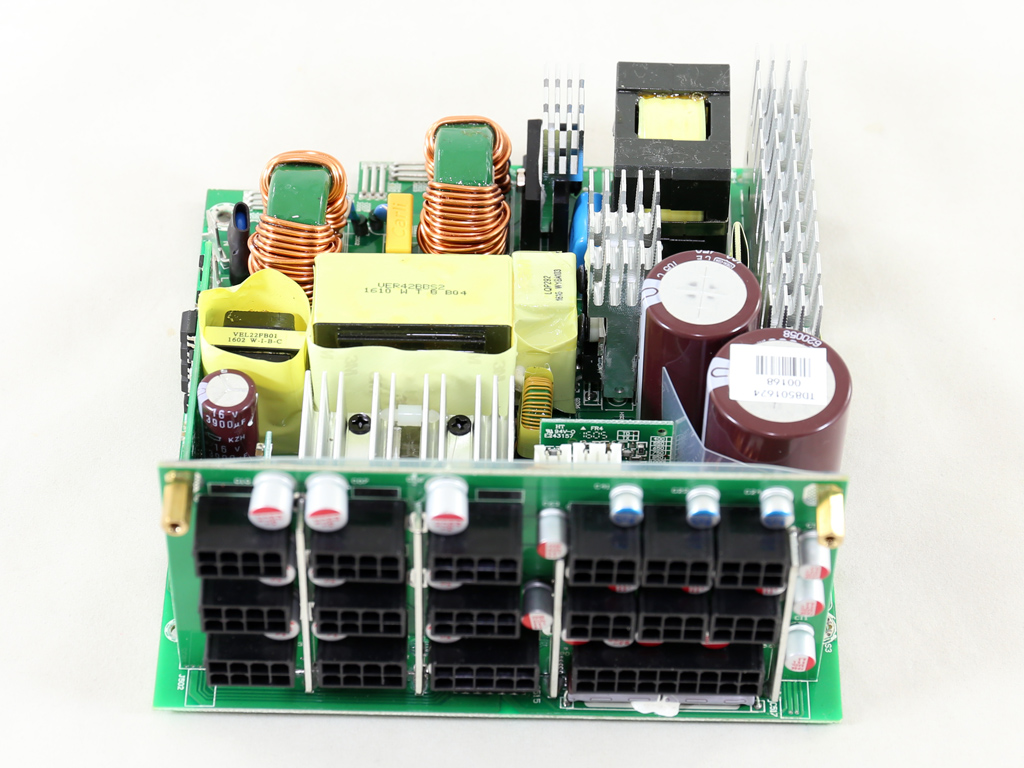



This is Seasonic's newest platform, sporting Titanium-class efficiency and higher performance than Super Flower's top-notch Leadex design. For the longest time, Super Flower led the efficiency game. This changes with the Prime family, which is forcing the competition back to the drawing board to improve their highest-end PSUs.
A full-bridge topology is used on the primary side of the SSR-850TD, along with an LLC resonant converter. This is typical for high-efficiency circuits able to satisfy the 80 PLUS Titanium requirements. On the secondary side, FETs regulate the +12V rail and a couple of voltage regulation modules (VRMs) handle the minor rails. Build quality is very good and the design is clean. Also, there's enough space among the mainboard's components to allow good airflow. Given the PSU's compact dimensions and its 850W capacity, we're impressed that the mainboard doesn't look overpopulated with components.




The transient filter starts as usual at the AC receptacle, where a small, shielded PCB hosts two X and two Y caps. It continues on the main PCB with four more Y caps, an additional X cap, two CM chokes, and an MOV. As you can see, this filter is equipped with more components than required. Finally, a couple of spade terminals are used for connecting the power cables with the AC receptacle.
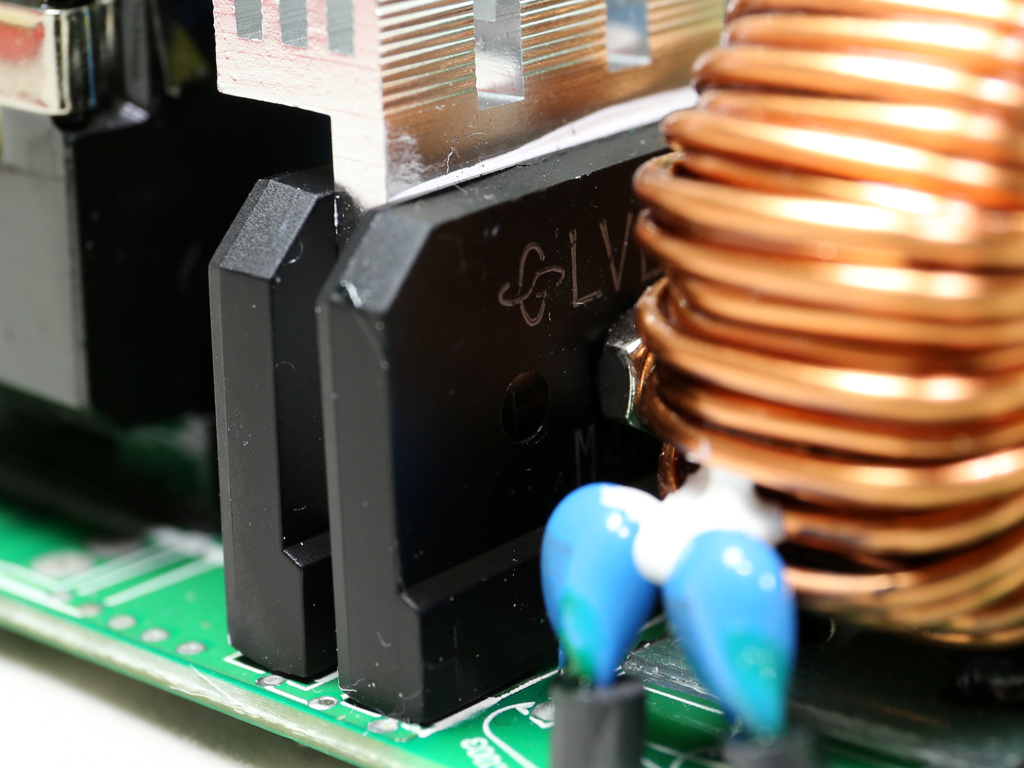

The bridge rectifiers are a couple of Vishay LVB2560s that can handle up to 50A of current. The 650W Prime unit uses the exact same rectifiers.
An NTC thermistor, along with a bypass relay, provide protection against large inrush currents during the PSU's start-up phase.
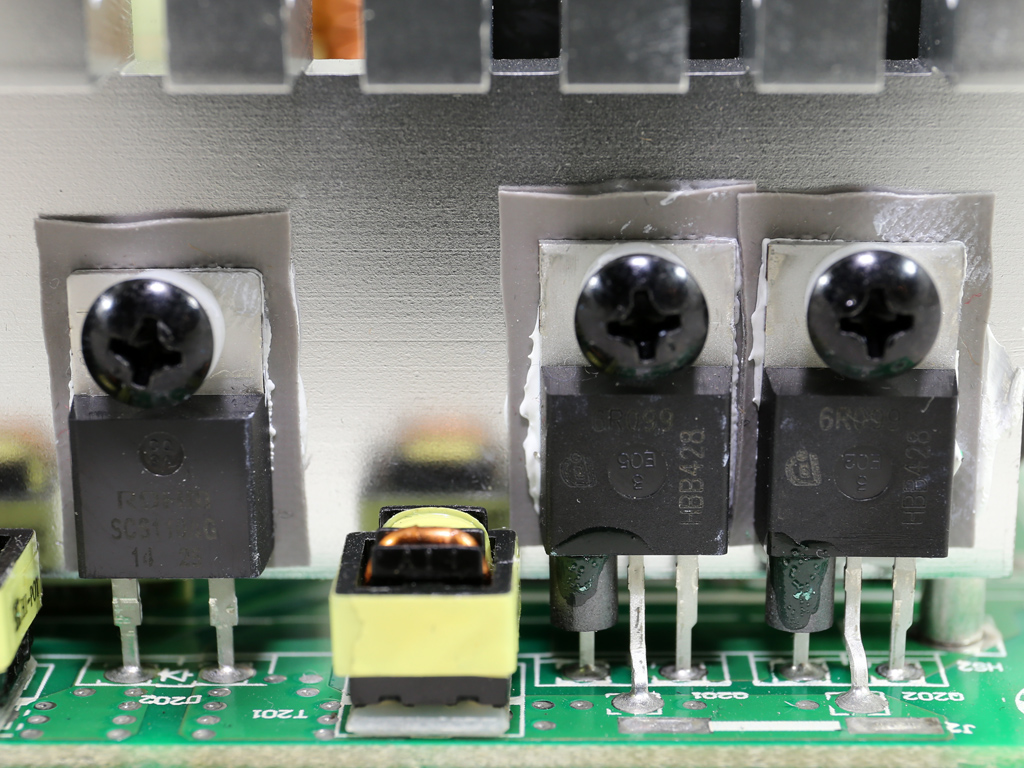



The APFC converter uses two Infineon IPP60R099CP FETs along with a single SCS110AG boost diode. The Prime 650 W uses two Infineon IPP50R140CP FETs in this stage, which can handle less current and have higher RDS(on) resistance, meaning that more energy is lost on them. The bulk caps are a pair of Chemi-Cons with 1100uF combined capacity. That's very high for an 850W PSU. Clearly Seasonic wanted to give this platform an extra long hold-up time.
Get Tom's Hardware's best news and in-depth reviews, straight to your inbox.
The PFC controller is an ON Semiconductor NPC1654 installed on a small vertical board that's surrounded by Mylar tape.

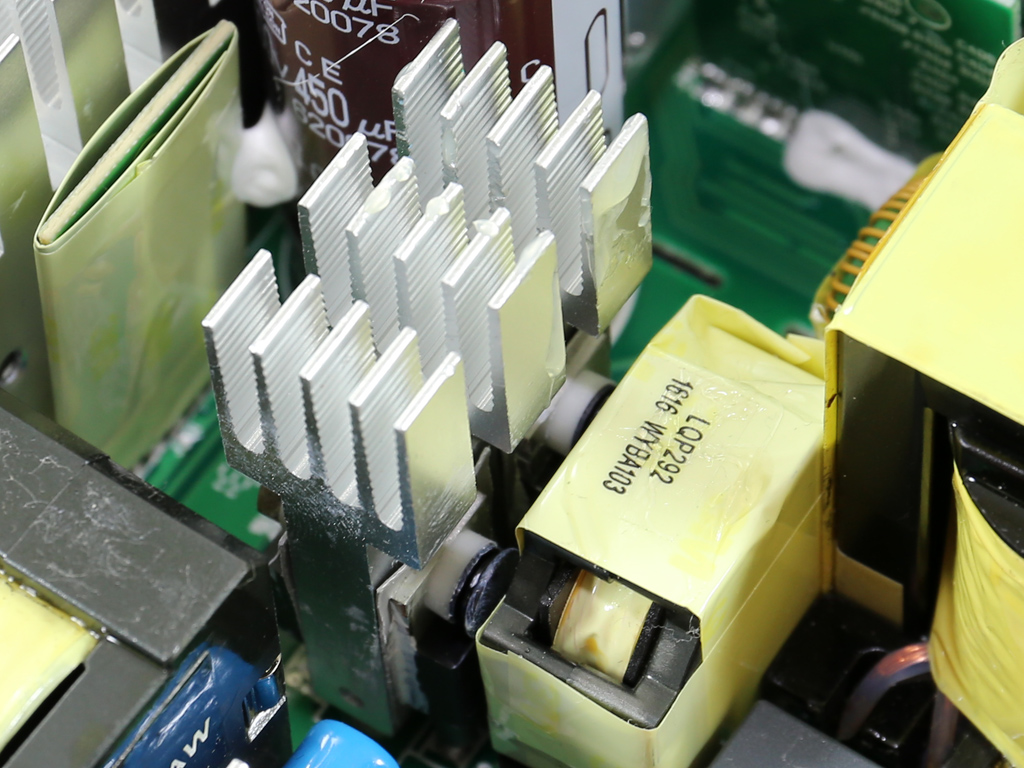


Four Infineon IPP50R140CPs are the primary switching FETs. They are arranged into a full-bridge topology and supported by an LLC resonant converter, which provides the efficiency boost needed to achieve Titanium-class efficiency. Finally, the driver ICs that handle the main FETs are two Silicon Labs Si8230BDs; they're installed on the solder side of the main PCB.


The resonant controller, a Champion CM6901, is installed on a small daughterboard.
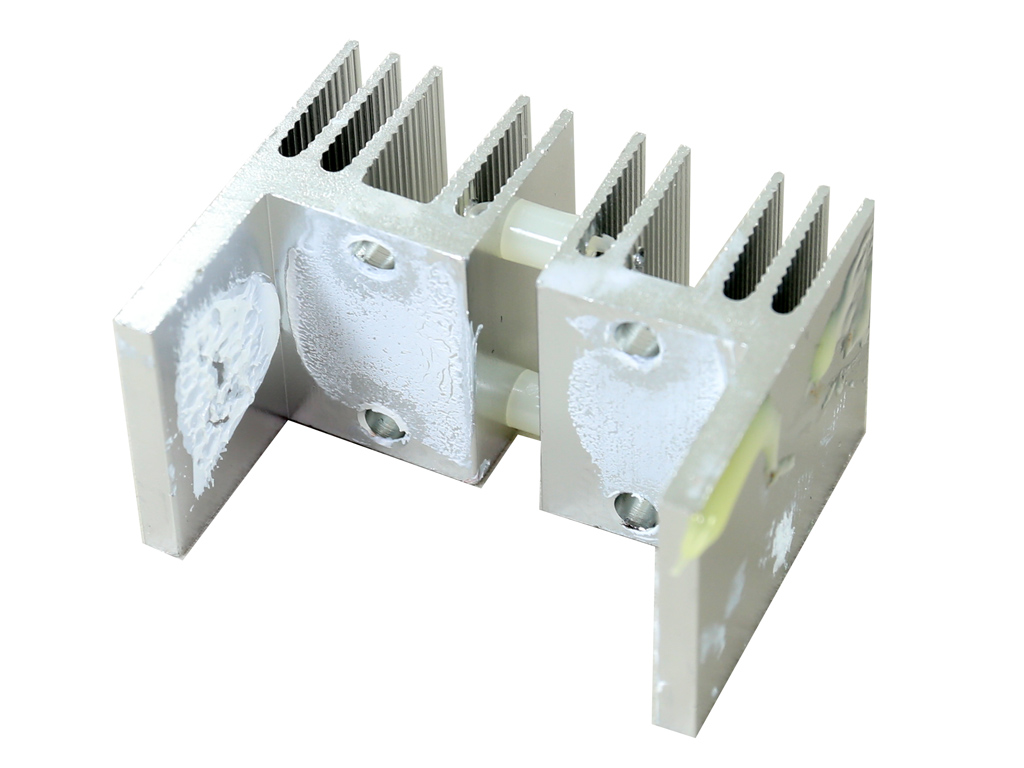
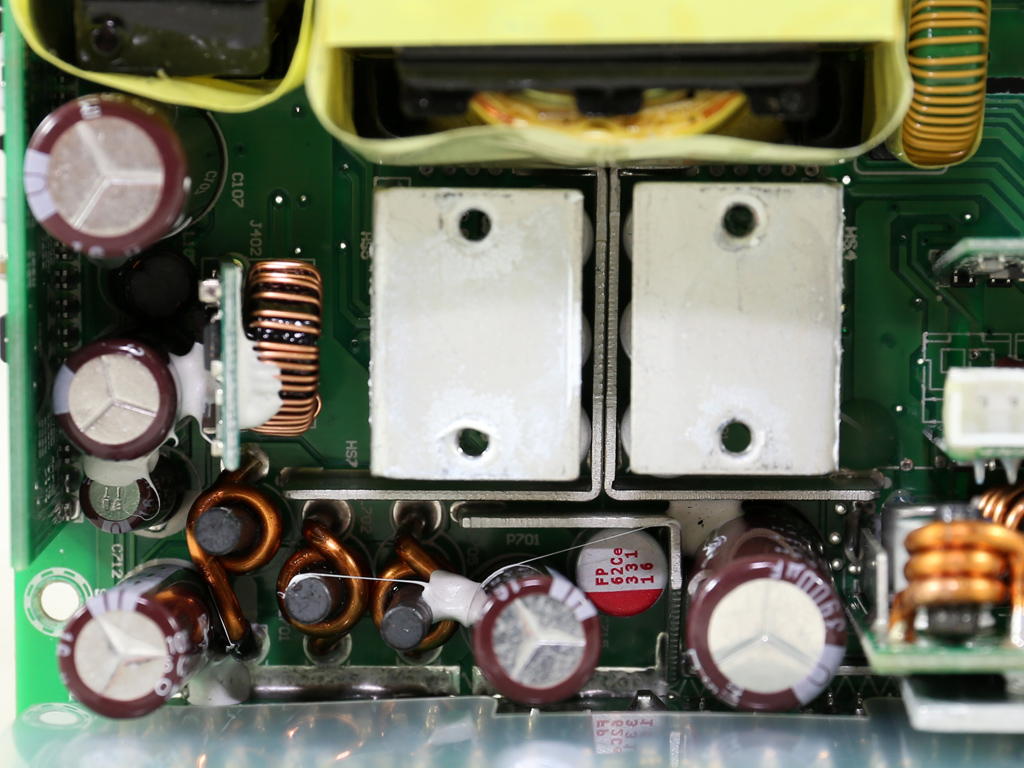
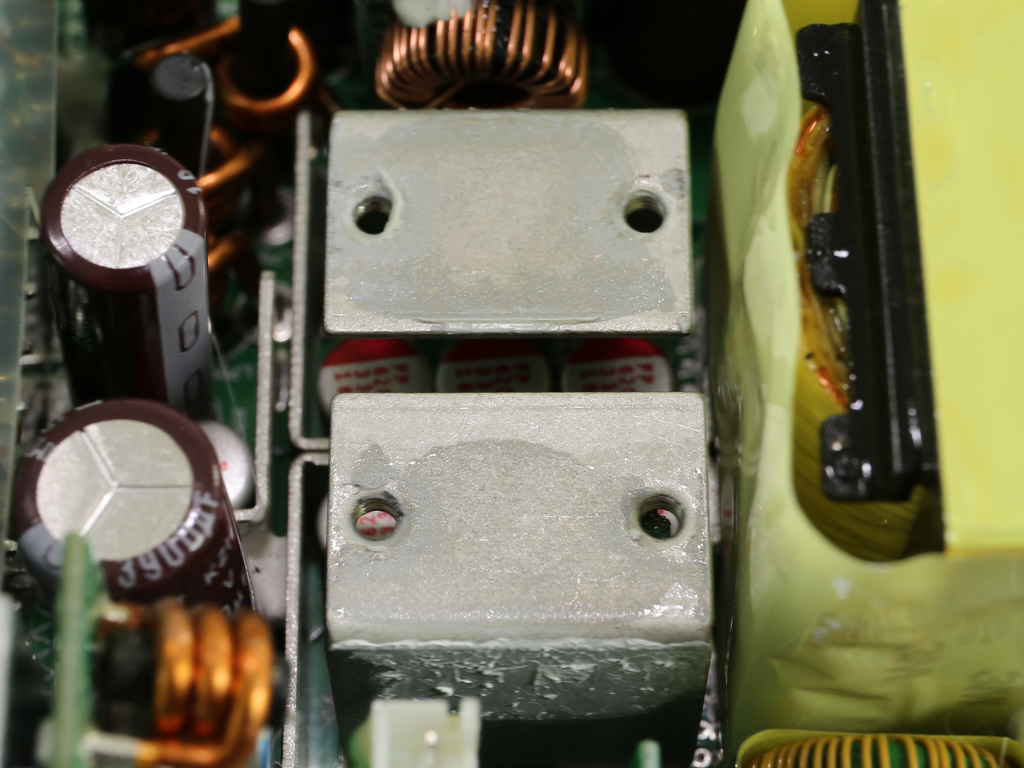


On the secondary side, the heat sink, consisting of two parts bolted together with four screws, is empty of components. It actually helps cool the four FETs installed right below it on the PCB's solder side. Under the +12V heat sink, a number of polymer FPCAPs filter the +12V rail, along with several electrolytic caps provided by Chemi-Con. The capacitor choice is very good, leaving us no room for complaints. After all, this PSU is supported by a 10-year warranty, so we'd only expect to find high-quality parts.


The +12V rail is regulated by four Infineon BSC014N04LS FETs. Besides the heat sink mentioned above, they're also cooled by the PSU's chassis.



The board that holds both DC-DC converters for regulating the minor rails houses six Infineon BSC0906NS (30V, 40A @ 100°C, 4.5mΩ) FETs, while the common PWM controller is a Anpec APW7159 IC. Exactly the same parts are used by all Titanium Prime models.
Another small daughterboard, located on secondary side, has a Lite-On LSP5523 buck converter installed, which we believe handles the -12V rail.



The PWM controller for the 5VSB rail is a Leadtrend LD7750R. It's installed on the solder side of the main PCB. The same rail also uses a STU6N65K3 FET, provided by STMicroelectronics, while a single Rubycon cap is used for the rail's filtering. We also found a Infineon BSC0906NS FET on the solder side of the mainboard, which most likely is utilized by the 5VSB rail.


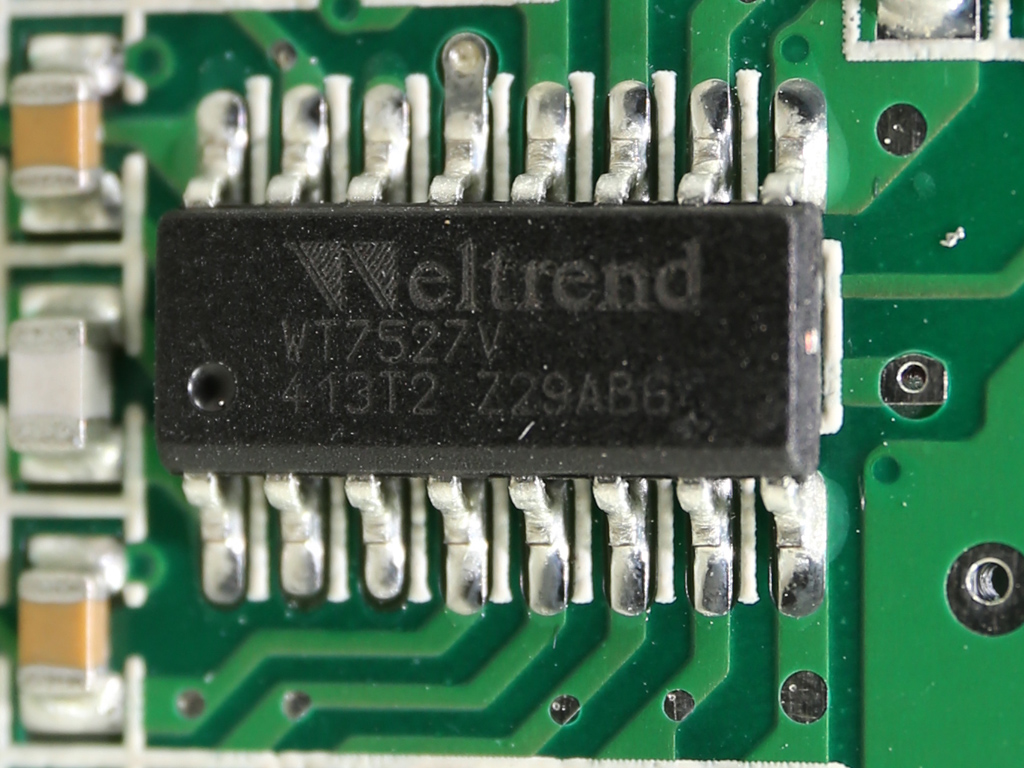

A large board houses the supervisor IC, a Weltrend WT7527V (OVP, UVP, OCP, SCP, PG), along with an AS393 dual-voltage comparator. The WT7257V supports two-channel OCP for the +12V rail. The Prime 850 W employs a single +12V rail, though.
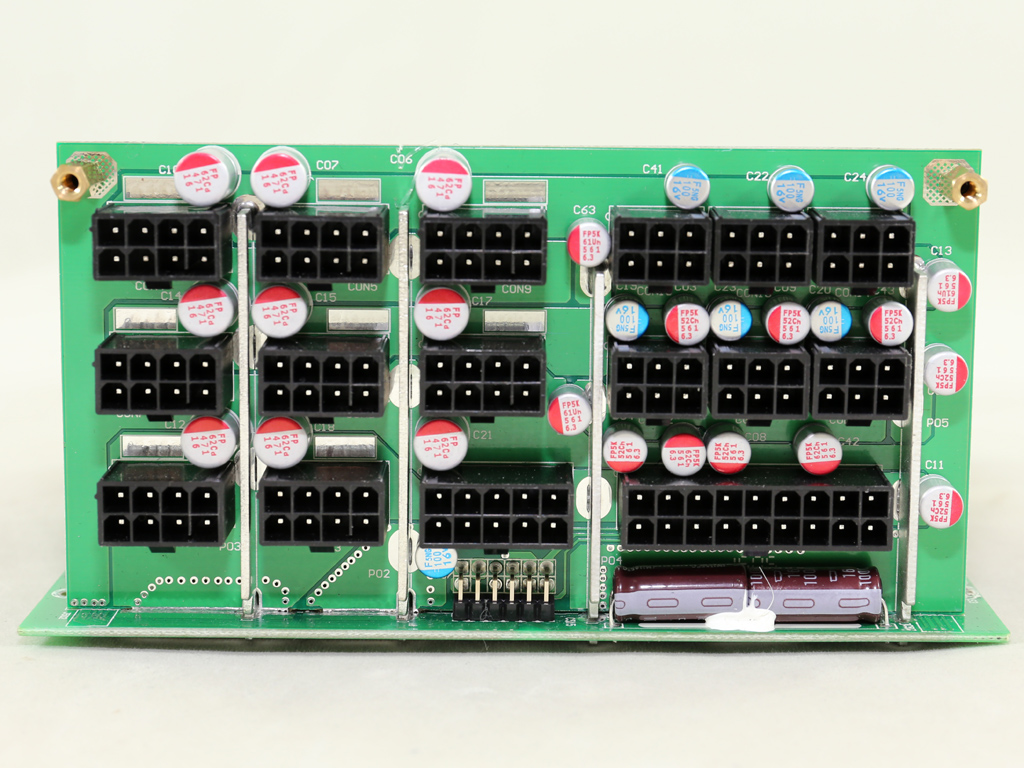





The front side of the modular board hosts a number of FPCAP and Chemi-Con polymer caps, along with two electrolytic ones.






The soldering quality is quite good, although not the best we have seen from Seasonic. As the production line matures the soldering quality should get better.


The FDB fan is provided by Hong Hua and its model number is HA13525M12F-Z. In our previous Prime 650 W review we talked about a 40,000-hour lifetime at 40 °C. But it seems that a change in this fan specification increased its lifetime to 70,000 hours at the same temperature. Unfortunately, we don't have the equipment or time to prove Seasonic's claims. This fan is loud at high rotational speeds. However, the profile Seasonic uses is conservative, so you may not even notice it.
Current page: A Look Inside And Component Analysis
Prev Page Packaging, Contents, Exterior, And Cabling Next Page Load Regulation, Hold-Up Time, And Inrush Current
Aris Mpitziopoulos is a contributing editor at Tom's Hardware, covering PSUs.
-
Nintendork There's no need for CF/SLI anymore, the typical PC + RX480/1080 class gpu barely goes above 300w (even less with APU setups or RX460/1050ti). We need way more 400-500w Titanium PSU's.Reply
We should have 90% efficiency at 50w load with PSU's in that wattage range. -
WFang I'm eagerly anticipating the 600W Passive Seasonic Titanium unit.. I read about it almost a year ago, and still have not seen it tested here ... hope that changes soon.Reply -
Unolocogringo Reply18846027 said:There's no need for CF/SLI anymore, the typical PC + RX480/1080 class gpu barely goes above 300w (even less with APU setups or RX460/1050ti). We need way more 400-500w Titanium PSU's.
We should have 90% efficiency at 50w load with PSU's in that wattage range.
Just because you do not need one , does not mean others don't.
I run multiple graphics cards for Folding@Home.The more you can run on each CPU the better. People who run Dual 1080s or dual 39x cards need them to push their 4K monitors.
So there is a need for them.
-
TJ Hooker Reply
The thing is, efficiency arguably matters less the lower the power is, because the absolute power being wasted is small. A 500W titanium PSU at max load is only drawing 15W more than a gold rated one. At 50%, 10W. As load drops past 50%, efficiency goes down, but absolute power wasted will still likely go down as well. I don't know, getting a 400W titanium PSU just seems like you're probably paying a lot more money than is necessary for a over engineered PSU which has little to no difference in performance compared to a less efficient, cheaper PSU.Nintendork said:We need way more 400-500w Titanium PSU's.
We should have 90% efficiency at 50w load with PSU's in that wattage range. -
powernod Just like Aris stated at his review, i find it amazing how Seasonic managed to generate such a low ripple values without using cable-in capacitors like the rest of the companies do !!Reply


